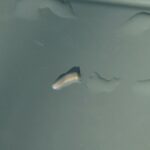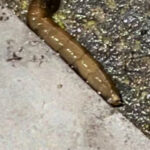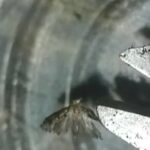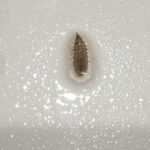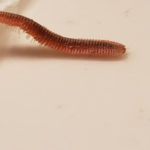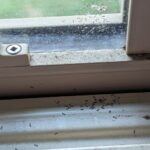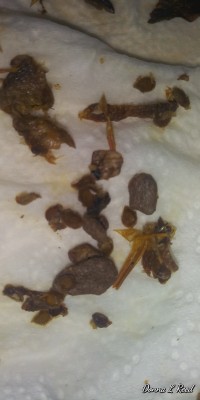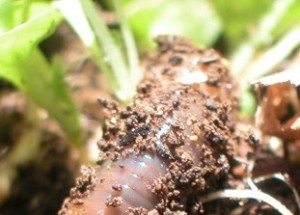
A frustrated reader wrote to us about the “numerous 1 inch worms” that appear on his porch after it rains. The reader has never experienced the worms-after-rain phenomenon until this year, and he is irritated with the worms’ presence. (Or the presence of whatever creature our reader is finding – they could be slugs, for instance.) He wants to get rid of the worms (or slugs) on his porch, which he regards as nothing but a pest. The worms are brown and, as mentioned, one inch in length. Most notably, the worms are described as having “antennae or eyes” on the front end of their bodies. What are the one-inch, brown worms on the patio after it rains, and how can you get rid of them?
This is difficult question to answer because the information provided pulls us in different directions. It reminds us of a question we were asked by a reader who was finding thousands of worms after it rained on his driveway. The long, skinny, brown worms that come out after it rains are almost always just earthworms that look like this:
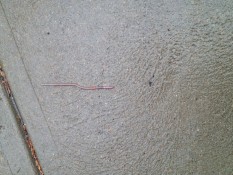
So, any time we are asked by readers about the worms that come out after it rains, our immediate assumption is that they are finding earthworms. However, the worms our reader found were only an inch long, and more notably the creature our reader found has “antennae or eyes.” Earthworms don’t really have eyes in any meaningful sense of the word “eyes.” Indeed, worm eyes can’t really see – they only have a few cells that are sensitive to light. This certainly isn’t something you would notice about a worm, and worms definitely don’t have anything like antennae. So, our default answer to the “worms after it rains” question is compromised. If the creatures our reader found have antennae, they can’t be earthworms (or other worms we are familiar with), but if they aren’t earthworms, what could they be?
The simplest answer is we aren’t sure. Without a picture, which would be of great assistance in this case, or more information about the creatures our reader is finding, it’s very hard to determine exactly what he is finding. Since the reader said the creatures had “antennae or eyes,” we think he might have been equating one with the other by, for example, assuming the eyes were on the creatures’ antennae. If this interpretation is correct, we think our reader might have found slugs, which are just land snails without shells. Most slugs have what appear to be two antennae near the front of their bodies. These are in fact not antennae, but rather tentacles, and these projections have light-sensitive tips, making the top of the tentacles slug eyes. (As with worms, slug eyes are only eyes in a very minimal sense.) This is why in popular culture slugs and snails have eyes on top of their tentacles. (Think of Gary from SpongeBob.) If the creature our reader found actually had antennae, he might have found millipedes, which can often take over part of the house. However, the most notable feature of millipedes – their many legs – was not noted by the reader. There is also no reason why our reader would find millipedes after it rains and only after it rains. This makes sense for earthworms and snails, whose bodies must remain moist to survive, but not for millipedes, so the millipede hypothesis has some obvious limitations.
So, we think it is most likely that our reader is finding slugs. We aren’t sure of this, but it is better than the other possibilities we considered – earthworms and millipedes. If our reader is in fact finding slugs, his mission should be to eliminate the places they can hide. A pile of firewood or several large stones by the patio, for instance, would make excellent places for slugs to hang out. Once it rains, the slugs will come out again, invading our reader’s patio. Thus, to the extent that it is possible, our reader should attempt to move the slug hiding places away from his patio and house. (If they are coming to his patio, they could make their way inside too, so it is inadvisable to move, say, a stack of wood away from the patio, but right next to the house.)
Hopefully we’ve correctly identified the one-inch “worms” as slugs, and hopefully our reader can follow our advice to get rid of the slugs. These problems can be annoying, so we wish our reader the best of luck in resolving the issue.
Thumbnail Photo Credit: Sanjay ach / CC-BY-SA-3.0
All About Worms is always free, always reader-supported. Your tips via CashApp, Venmo, or Paypal are appreciated! Receipts will come from ISIPP Publishing.
You might also find these guys interesting!




